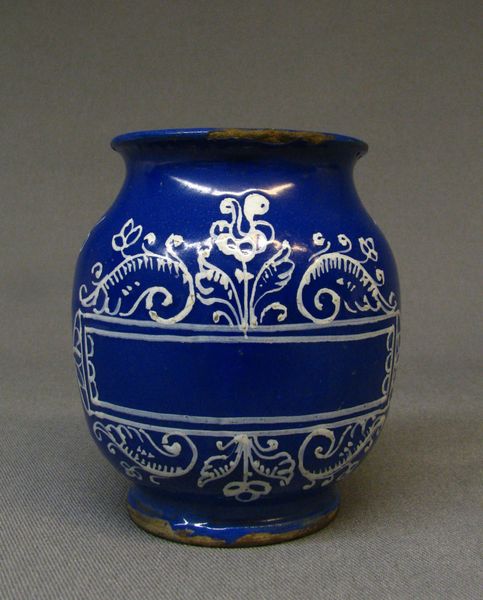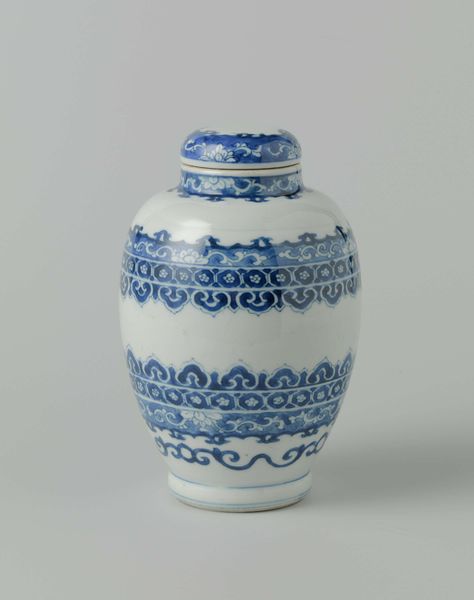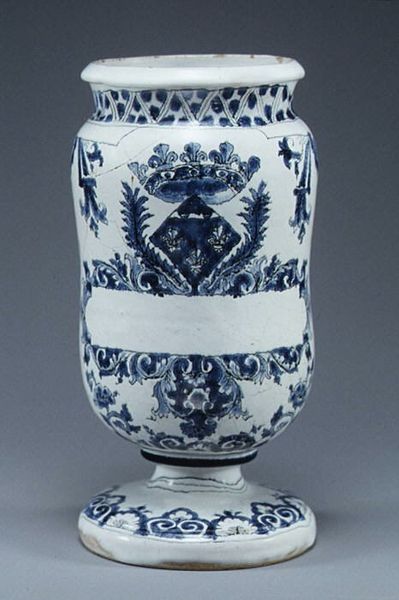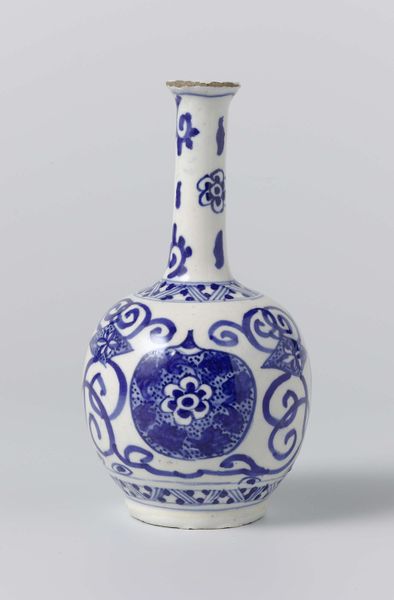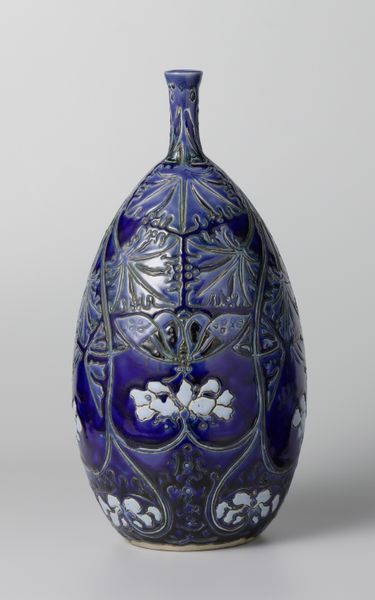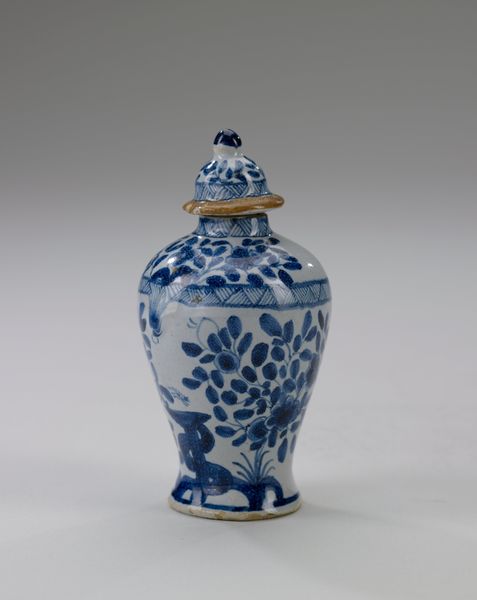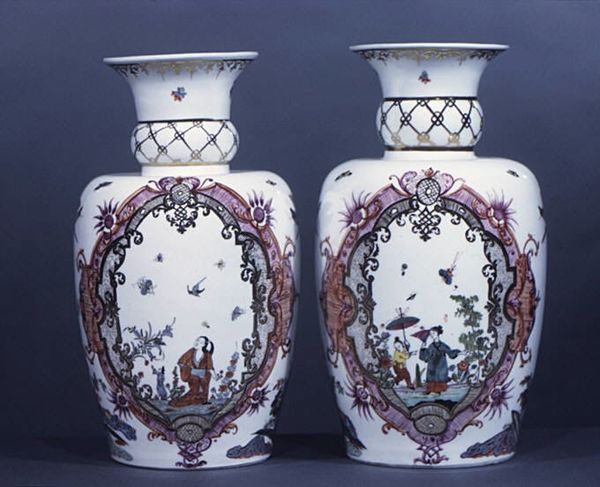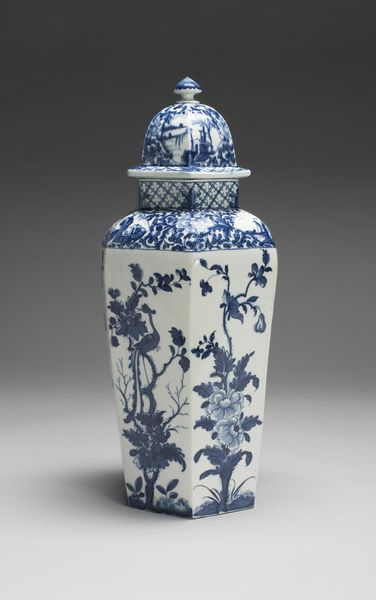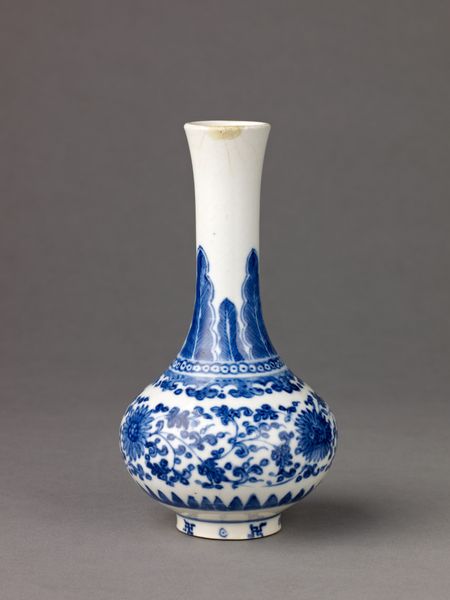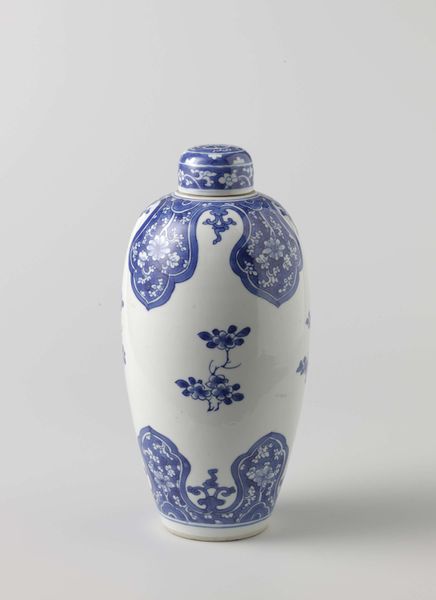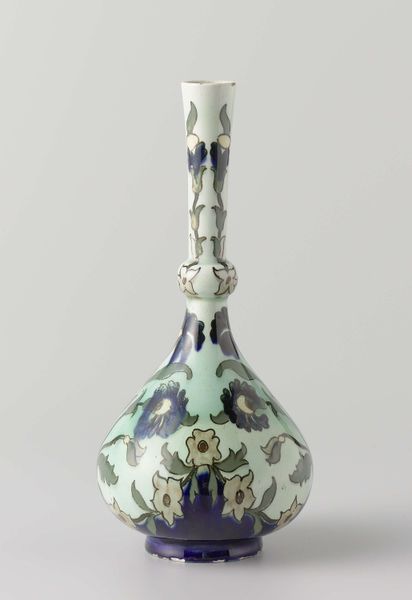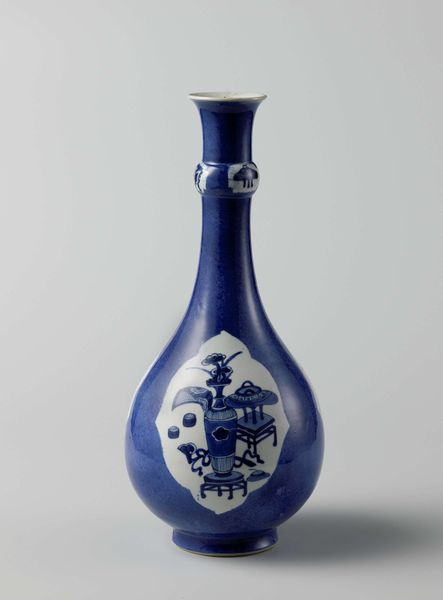
Double-gourd vase (one of a pair, part of a garniture) 1685 - 1695
0:00
0:00
ceramic, sculpture
#
baroque
#
ceramic
#
sculpture
#
ceramic
#
decorative-art
Dimensions: Height: 19 11/16 in. (50 cm)
Copyright: Public Domain
This double-gourd vase was made in Delft, the Netherlands, by Lambertus van Eenhoorn in the 17th or 18th century, out of tin-glazed earthenware. Delftware like this was born out of a specific context: the Dutch East India Company's trade with China. The Dutch had a huge appetite for Chinese porcelain. But because of trade disruptions, local manufacturers in Delft stepped in to fill the gap. They mimicked the appearance of Chinese porcelain, using a tin glaze to create a white surface that could be painted with blue decoration. The decoration on this vase is all hand-painted. Look closely, and you can see the individual brushstrokes. Each vase represents many hours of skilled labor. The double-gourd shape itself may have been created using molds, and the two halves joined together before firing. Delftware like this shows us how global trade and local craftsmanship intersected in the early modern period. It blurs the lines between imitation and innovation, craft and fine art.
Comments
No comments
Be the first to comment and join the conversation on the ultimate creative platform.
